Are LinkedIn Users Getting Too Snarky?
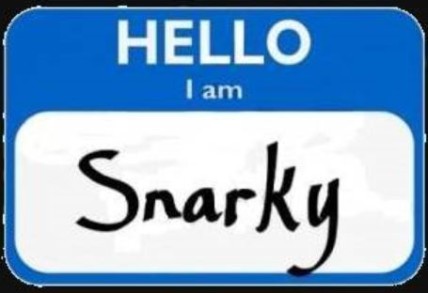
LinkedIn Users Losing Inhibitions in
Posts and Comments
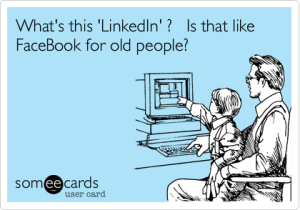 As LinkedIn use begins to sway more towards social and away from strictly professional, members are getting louder and louder about what they think about the posts of others. LinkedIn has long been thought of as the social media of working grownups: Serious stuff for professional folks. Although LinkedIn falls into the category of social media, it refers to itself as a professional networking site. But any LinkedIn user will have noticed that over the past year, even over the past 6 months, the social flavor of posts and the grittiness of comments has increased dramatically. Controversial posts get a viral bullhorn of remarks. Whether it’s an IQ test, meme, sexy selfie, or just a nice picture; users are quick to show their disapproval for what they deem inappropriate. This brings a slew of commenters who come to the defense of the unhappy poster. How did this Facebooking of LinkedIn all come about? What happened to our orderly synergy of business ideas?
As LinkedIn use begins to sway more towards social and away from strictly professional, members are getting louder and louder about what they think about the posts of others. LinkedIn has long been thought of as the social media of working grownups: Serious stuff for professional folks. Although LinkedIn falls into the category of social media, it refers to itself as a professional networking site. But any LinkedIn user will have noticed that over the past year, even over the past 6 months, the social flavor of posts and the grittiness of comments has increased dramatically. Controversial posts get a viral bullhorn of remarks. Whether it’s an IQ test, meme, sexy selfie, or just a nice picture; users are quick to show their disapproval for what they deem inappropriate. This brings a slew of commenters who come to the defense of the unhappy poster. How did this Facebooking of LinkedIn all come about? What happened to our orderly synergy of business ideas?
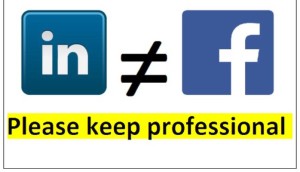 LinkedIn is a growing and changing animal. Social media, itself, is still in its infancy; and businesses and professionals are continuing to learn how to correctly use and leverage it as technology changes to keep pace. It’s a never-ending game of catch up. LinkedIn has become much more of a potpourri of engagement and not just a bulletin board for businesses. But why the loss of reserve? This is due to two developments: the adoption of the Long Post and LinkedIn Pulse.
LinkedIn is a growing and changing animal. Social media, itself, is still in its infancy; and businesses and professionals are continuing to learn how to correctly use and leverage it as technology changes to keep pace. It’s a never-ending game of catch up. LinkedIn has become much more of a potpourri of engagement and not just a bulletin board for businesses. But why the loss of reserve? This is due to two developments: the adoption of the Long Post and LinkedIn Pulse.
LinkedIn Pulse and the Long Post
 In 2010, the Pulse App was launched as a news aggregator for Android, iOS and HTML5 browsers to great success. Social media outlets were growing as a tool and showing no signs of letting up. Social media platforms such as Facebook, Twitter, and YouTube were commanding huge amounts of time from their users. Businesses scrambled to meet this new market and figure out how to monetize it. Other social media platforms followed suit. LinkedIn, was still number one in professional networking but was salivating to get usage numbers to match the other more social platforms. The look and feel of LinkedIn changed to make it resemble other social media platforms like Facebook and Youtube and to increase engagement. By October of 2012, LinkedIn looked like other platforms. You would see the familiar little red notification flags telling you how many notifications and messages you had waiting, etc., just like on Facebook.
In 2010, the Pulse App was launched as a news aggregator for Android, iOS and HTML5 browsers to great success. Social media outlets were growing as a tool and showing no signs of letting up. Social media platforms such as Facebook, Twitter, and YouTube were commanding huge amounts of time from their users. Businesses scrambled to meet this new market and figure out how to monetize it. Other social media platforms followed suit. LinkedIn, was still number one in professional networking but was salivating to get usage numbers to match the other more social platforms. The look and feel of LinkedIn changed to make it resemble other social media platforms like Facebook and Youtube and to increase engagement. By October of 2012, LinkedIn looked like other platforms. You would see the familiar little red notification flags telling you how many notifications and messages you had waiting, etc., just like on Facebook.
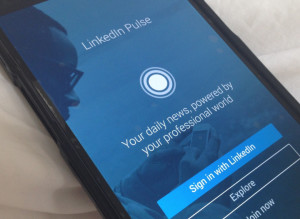 In November of 2013, LinkedIn acquired the Pulse App to integrate with its tools. They were poised to offer it to their members to create engagement like they had never seen. They would marry it with their new posting feature. In February of 2014, LinkedIn rolled out its Long Post feature that gave authorized users a reach like they had never had. Certain power “Influencers” were invited to participate in the new program. They could now write longer posts that would actually appear on their own pages and were essentially, blog posts (the only feature that came close to this was the discontinued LinkedIn Answers). These posts gave the writer a much larger canvas. They could include photos, videos, links, etc. LinkedIn and Pulse would work hand in hand to send their posts out through the Pulse app and push them out to all their connections. It could be shared and showcased and really brought a new kind of value to LinkedIn. The Long Posts were now referred to as LinkedIn Pulse Posts.
In November of 2013, LinkedIn acquired the Pulse App to integrate with its tools. They were poised to offer it to their members to create engagement like they had never seen. They would marry it with their new posting feature. In February of 2014, LinkedIn rolled out its Long Post feature that gave authorized users a reach like they had never had. Certain power “Influencers” were invited to participate in the new program. They could now write longer posts that would actually appear on their own pages and were essentially, blog posts (the only feature that came close to this was the discontinued LinkedIn Answers). These posts gave the writer a much larger canvas. They could include photos, videos, links, etc. LinkedIn and Pulse would work hand in hand to send their posts out through the Pulse app and push them out to all their connections. It could be shared and showcased and really brought a new kind of value to LinkedIn. The Long Posts were now referred to as LinkedIn Pulse Posts.
By the end of 2014, LinkedIn had rolled out the Long Post feature to all of its users and the race was on to get attention. LinkedIn Pulse was brimming with new Pulse Posts each day and notifications were hitting profiles at breakneck speed. LinkedIn Pulse allowed for sharing that went much deeper than just links to articles and posing questions. As users began to realize its power, it was used more and more frequently and it became a go-to blogging tool. Writers began giving their copy a less-business, more human side; more informal, telling stories, hooking readers. Unfortunately, this very powerful tool began to loose its potency quickly as users became used to the large number of notifications they 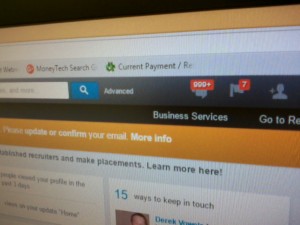 were now getting and starting to ignore the content. Time went on and they began to focus more on the shorter updates again. Users would log in and just scroll down their homepage, just like any other social media site. As smartphone use and integrated apps also put this feed in their hands, they began to spend more time posting, commenting, and scrolling their LinkedIn homepage. Users began to dread their notifications and to treat the homepage feed more like a Facebook timeline or wall. Fun posts were becoming more of the norm than the exception. Users fought in comments over whether posts were more suitable for Facebook. Social was fighting with professional for full sway of LinkedIn. Also, with complaints over too many Pulse Post notifications, LinkedIn quietly changed its algorithm in Fall of 2015 to limit who gets notified of your Pulse Posts (goodbye reach) and determine it through engagement (hello mindless likes and comments to create activity). Also, at the end of 2015, the Pulse App was dismantled. No longer would Long Posts be pushed out through the app to mobile devices. Now the reach was limited to LinkedIn and then only those members LinkedIn believes you to be engaged enough with to notify. Users continued to flood the LinkedIn homepage feed and abandon LinkedIn Pulse. The new kind of engagement was through quick posts, likes, and comments; just like Facebook and other social media. Now LinkedIn is a thorny place. If you post the wrong thing, prepare to get some grouchy remarks.
were now getting and starting to ignore the content. Time went on and they began to focus more on the shorter updates again. Users would log in and just scroll down their homepage, just like any other social media site. As smartphone use and integrated apps also put this feed in their hands, they began to spend more time posting, commenting, and scrolling their LinkedIn homepage. Users began to dread their notifications and to treat the homepage feed more like a Facebook timeline or wall. Fun posts were becoming more of the norm than the exception. Users fought in comments over whether posts were more suitable for Facebook. Social was fighting with professional for full sway of LinkedIn. Also, with complaints over too many Pulse Post notifications, LinkedIn quietly changed its algorithm in Fall of 2015 to limit who gets notified of your Pulse Posts (goodbye reach) and determine it through engagement (hello mindless likes and comments to create activity). Also, at the end of 2015, the Pulse App was dismantled. No longer would Long Posts be pushed out through the app to mobile devices. Now the reach was limited to LinkedIn and then only those members LinkedIn believes you to be engaged enough with to notify. Users continued to flood the LinkedIn homepage feed and abandon LinkedIn Pulse. The new kind of engagement was through quick posts, likes, and comments; just like Facebook and other social media. Now LinkedIn is a thorny place. If you post the wrong thing, prepare to get some grouchy remarks.
Embrace the Snark
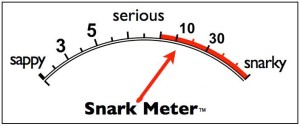 So, where do we stand in 2016? It’s seems the pendulum has swung closer to social but the jury is still out on this one. LinkedIn is a house divided and the level of snark has reached historic heights. There’s a camp that wants to share not only business related promos and news, but also “feel good” posts and fun stuff like memes and selfies. There’s another camp that maintains this is not the right platform for social postings and that members should be keeping things “all business.” They feel like these social posts are littering their professional platform. There are numerous lists of tips on how to stay professional on LinkedIn for those who are interested, but there is no shortage of folks on LinkedIn who will tell you exactly what they think of your posting habits. It has become an all out filibuster at times, with controversial posts garnering comments and replies contesting the appropriateness of it all and keeping the “problem” post on the top of the heap for days. I find my LinkedIn homepage equal parts, promotion, memes, snarkiness, and selfies. I won’t even address the whole camp of folks who are using it to meet possible love interests.
So, where do we stand in 2016? It’s seems the pendulum has swung closer to social but the jury is still out on this one. LinkedIn is a house divided and the level of snark has reached historic heights. There’s a camp that wants to share not only business related promos and news, but also “feel good” posts and fun stuff like memes and selfies. There’s another camp that maintains this is not the right platform for social postings and that members should be keeping things “all business.” They feel like these social posts are littering their professional platform. There are numerous lists of tips on how to stay professional on LinkedIn for those who are interested, but there is no shortage of folks on LinkedIn who will tell you exactly what they think of your posting habits. It has become an all out filibuster at times, with controversial posts garnering comments and replies contesting the appropriateness of it all and keeping the “problem” post on the top of the heap for days. I find my LinkedIn homepage equal parts, promotion, memes, snarkiness, and selfies. I won’t even address the whole camp of folks who are using it to meet possible love interests.
So, what are your thoughts? How do you feel about the posts you are seeing on your LinkedIn feed these days? Please comment below and keep the snark level to a comfortable boil. 🙂
References:
Tips to Keeping Your LinkedIn Profile Professional – January 9, 2016 – Talin Orfali, Blog – https://talinorfali.wordpress.com/2016/01/09/tips-to-keeping-your-linkedin-profile-professional/
